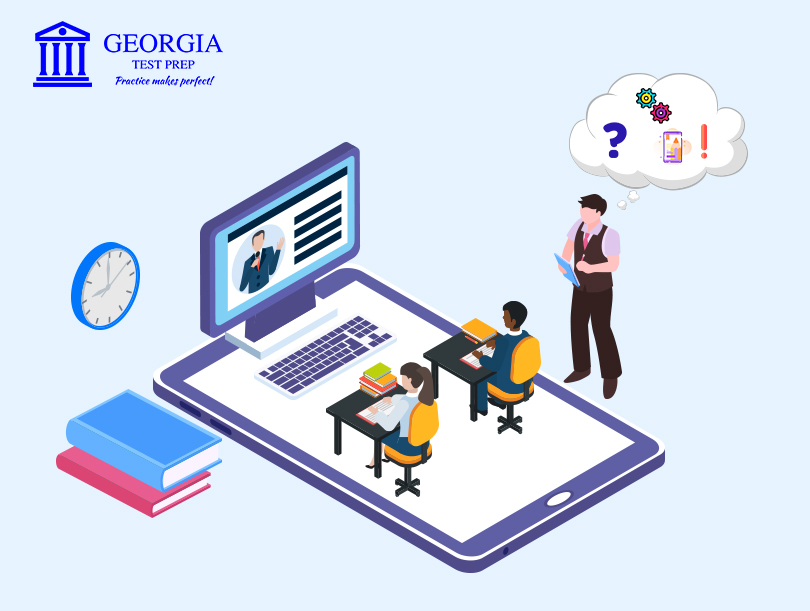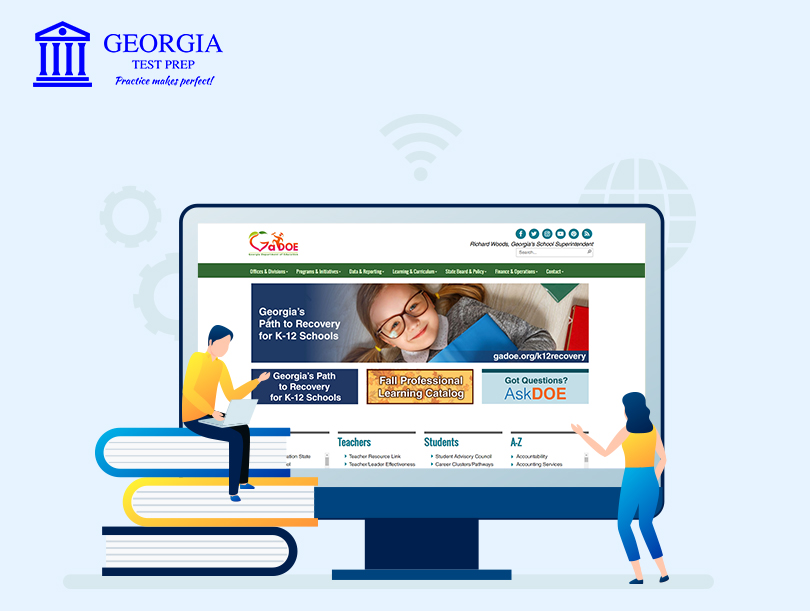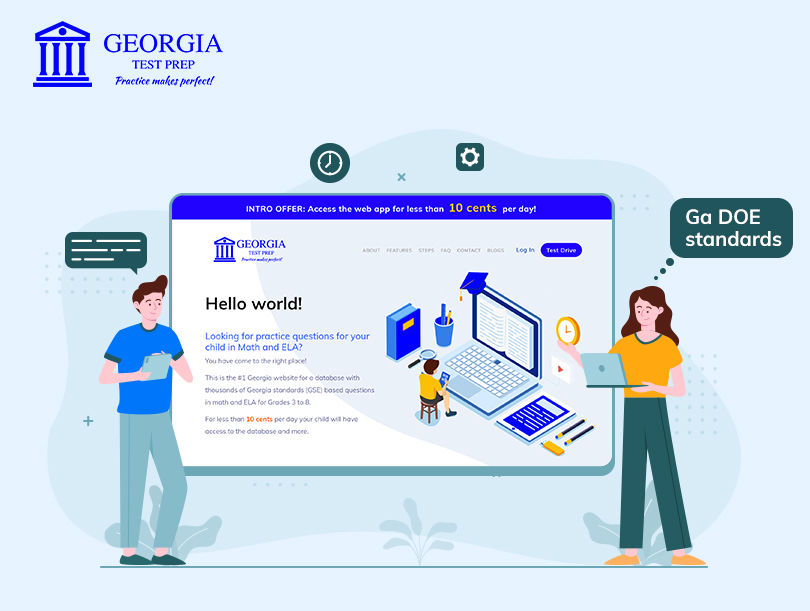The Issues Parents Have Been Facing With Virtual Learning

School districts have done their best to plan learning contingencies due to the COVID situation. Some schools have opted for virtual learning to keep children and staff safe, and this is an entirely new paradigm for everyone involved– the teachers, the students, and last but not least: the parents.
We are all figuring it out as we go along. It’s a bit like building the plane as you’re flying it.
Everyone is going through an abrupt change, and this is bound to produce anxiety in everyone. The idea of virtual learning is new and possibly intimidating for many parents. Many families may additionally be undergoing financial stress, employment flux, or pressures of home-working as a result of the pandemic.
The fact of the matter is that every parent wants their child to do well in school, even in the face of mitigating circumstances.
In a study by McAfee, Distance Learning Challenges, taken in April 2020, the following were found as the top five difficulties faced by parents (of kids in K-12) with virtual learning:
- Keeping their children focused on schoolwork (instead of other online activities) – 50.31%
- Establishing a daily routine – 49.26%
- Balancing household responsibilities and teaching – 41.83%
- Establishing a wake-up and bedtime schedule – 33.40%
- Balancing working from home and teaching – 33.31%
Whether they have kindergarteners or high school seniors, parents are sharing many of the same pains.
There is no easy way to overcome the issues that parents are facing with virtual learning. We’re all learning how to manage our day and to make the best of learning at home in the most challenging of circumstances. This will require a learn-as-you-go approach, adapting to your child’s specific needs, and working with them as co-stakeholders in their success.
But just know that you are not alone. The task may seem daunting at times, given all the other things that you are juggling, especially if one of them is a job that requires you to be out of the house. We hope that knowing all of the major difficulties that parents are facing in these novel times will help develop a sense of solidarity and provide some comfort in knowing that we are all figuring this stuff out together.
Biggest Issues Faced By Parents with Virtual Learning
Parents are unsupported with the tech
A study by edtech company Promethean found that only 5% of teachers feel like they’re receiving full training and support for edtech in their schools. It shouldn’t be a surprise then if you as a parent feel unsupported.
Everyone is getting used to the virtual learning interface that their child’s school has provided, and many parents are likely to run into issues. But if you are running into issues, then many other parents probably are too.
Consider creating a WhatsApp group or other line of communication with other parents to share problems and fixes. We need to help each other as much as we can. For persistent issues, reach out to the school.
Students may not ask for help
Schools that are offering virtual learning are largely relying on students to self-learn. Students are expected to read the course material, watch a few videos, and print some learning material to study from. There is minimal instructor-led training to explain the content, though there might be a couple of help-sessions for those that need it.
However, a lot of children shy away from asking for help or do not know what to ask for. In that case, there will be gaps in the student’s learning which will give them a shaky foundation and have long-term repercussions for their education.
This is where the parents’ involvement is key. One thing that will help parents in this is giving the student a platform to practice questions based on their lessons. This serves a dual purpose:
- The results of the practice questions will help identify where the student needs help.
- The practice of answering questions will help create a stronger foundation and build the confidence students need during exam time.
Reducing distractions
There’s a number of distractions available to students in their home environments. You can put them in front of the computer, but kids are kids – it’s not a stretch of the imagination to suppose they might switch over to a game at some point.
A 2016 report found that students check their devices for "non-class purposes” 11.43 times a day on average. And that was in an environment where a teacher could walk around and monitor what’s happening, and keep them engaged. The ease of that proximity is lost with virtual learning.
Creating an academic environment at home
Home is home, and school is school. Both places have a very different vibe, and yet students are now being asked to get into the school mentality at home.
This can prove to be difficult, especially if everyone is at home for 24 hours. And a bustling household can be very distracting indeed.
Parents need to do what they can to provide a quiet space for their kids, and help them mentally demarcate that as a learning space.
Investment in technology
Some families may find the investment in technology a little taxing. At a minimum, a high-speed internet connection is required. For families with multiple children and a single screen at home, this can present a real conundrum – on the one hand, it’s unfair to their kids; on the other hand, it may be financially prohibitive to invest in another machine.
Devices like a Chromebook, noise-canceling headphones, an extra, larger monitor are all great additions that could enhance a child’s learning experience, but may not be within everyone’s budget.
Malfunctioning technology
There is little that parents can do if the school software itself crashes. And many school districts across the country experienced exactly that as they tried to kick off virtual learning this year.
School-issued Chromebooks in Maryland would not load on the first day. A ransomware attack in Hartford, Connecticut forced schools to postpone the start of online classes. A Zoom outage in Seattle forced schools to shut down for more than two hours. Online learning programs around the nation are crashing. And this is just in the first couple of months!
Unfortunately, there’s not much we can do in these situations but be patient and help our children be patient. It’s definitely going to be hard on them, but if we remain calm, then they are more likely to do so as well.
Motivation needs monitoring
Classroom environments are explicitly designed to support learning, whereas bedrooms and kitchen tables are not. Those are comfort environments, and it can be difficult to get into “school mode”.
Sustained motivation needs monitoring. A teacher on the other end of a Zoom call can’t really do that, so it often falls to the parent. Between doing their own job and running the house (making sure everyone eats on time, and so on), it’s asking a lot.
One of the best things parents can do is set clear, measurable goals with their children, and set them regularly so that students have something to focus on. Check in on them periodically to see if they are on course to reaching their goals.
Sometimes a student can’t stay engaged
Sometimes a student just can’t get into a certain lesson, and without a teacher to intervene with personal guidance, it can become a real hindrance to progress.
There’s no quick fix to this, but there are things that parents can do over time that will help students get unstuck and develop a growth mindset towards facing problems like these.
Parents can also get involved more directly to help students stay engaged. One analysis showed that school children benefit from discussions about learning and school-related issues with their parents and from joint readings.
Children need to move
Children just aren’t used to sitting in one place for extended periods of time, and we may forget that. At school they had a structured schedule that gave them a lot of movement in recess time, walking through the hallways, talking to classmates, and a lot of other ways that are lost in virtual learning.
It’s not healthy to spend excessive time sitting (which is something that we parents would also do well to remember).
Make sure your kids are getting some movement throughout the day. Mid-lesson stretching and walks around the house are good enough to start with. They should also be encouraged to get some strenuous physical activity after school hours.
Brain breaks for virtual learning
Students all have different attention spans. This is really put to the test in a virtual learning setup.
Additionally, paying attention on a Zoom call, which lacks many of the emotional and physical cues of in-person instruction, puts a heavier cognitive load on students.
Make sure your child is getting "brain breaks" between lessons. This time lets their minds relax and refresh.
Student’s physical health
Virtual PE classes are perhaps a bit of a force-fit, but it’s about as best as schools can do. But it’s not enough. And as we stated in a previous point, children aren’t getting nearly as much movement in virtual learning as they were getting in school.
Lack of physical exercise can lead to physical ailments, and reduced attention spans and cognitive function. On the other hand, repeated physical activity during school can improve children's attention.
Encourage your kids to get some exercise before starting learning, and definitely after school hours. It might be a bit of a fight, because they may feel like jumping on video games as soon as school instruction is over. But sitting down to stare at a screen after a full day of doing exactly that is not ideal!
Feelings of isolation
Many students will miss school. The buzz of the classroom, meeting their friends, the daily activities of school life – everything they are used to has been replaced with sitting in front of a computer screen in their own house. Under these conditions, students can begin to feel a sense of isolation that affects their ability to learn.
Keep an open dialogue with your child about their feelings. If possible, help them stay in touch with their friends (though let’s face it, their generation is way ahead of us when it comes to that). The point is to be present, be patient and understanding, and be as helpful as possible.
Getting the most out of virtual learning
Virtual learning has laid a plethora of challenges on students, and naturally, this has passed on to parents as well. Along with everything else, we have a responsibility to make school a priority and keep our kids from treating virtual learning as a vacation.
But we are all in this together, and we are all learning together. Regardless of what specific issues you might be facing, the following bits of advice should be the general program to follow:
- Provide positive feedback.
- Be patient and flexible.
- Avoid disciplining children during school activities, especially if children are used to having teachers who use positive reinforcement rather than scolding.
Virtual learning may have its limitations, but dedicated practice testing will help students retain more and solidify concepts. Georgia Test Prep is committed to providing an excellent practice testing tool to help students excel at their studies and ease the burden on parents. With the Georgia Test Prep tool:
- You will get thousands of questions for grades 3-8 written by Georgia state teachers, based on the Georgia school curriculum, specifically for Georgian students.
- Questions are organized according to the lessons that are taught in the classrooms. You don’t need to search for the “right questions”, all you have to do is find out from your child or their teacher which topics are being covered from the Georgia standards.
- You can take control of the learning. While the school will handle the classroom teaching, parents and students together can set out their practice testing plan.
- You can immediately track the student’s progress as they are completing the practice questions, rather than waiting for school assignments to be checked. You can then focus on areas that need to be strengthened.
- When practice testing is supplemented with classroom learning, it increases long-term retention of information and concepts. Even 30 minutes of practice testing a week has been found to be effective.
- There are no additional infrastructure requirements or books needed. The tool is online and goes everywhere the child goes.
Share This Post
Tags
Follow Us
Subscribe to our blogs.
Don't miss any updates!
Related Blogs
7 Important Learning Habits To Build In Your Child For Success
Many of the habits that we carry throughout life, for better or for worse, are developed in childhoo... read more
What is the story behind Georgia Test Prep?
Being parents of young children it was evident that our work was cut out for us in order to support ... read more
Most Viewed Blogs
The Issues Parents Have Been Facing With Virtual Learning
School districts have done their best to plan learning contingencies due to the COVID situation. Som... read more
Everything You Need To Know About the Georgia Milestones Assessment System
If you’ve got a child in the Georgia state school system, then you’ve probably heard of the Geor... read more
5 Ways To Help Students Struggling With Reading Comprehension
Reading comprehension isn’t about being able to string words together, it’s about deriving meani... read more
Announcing the Launch of Georgia Test Prep
It is with great pleasure we announce that today we have launched Georgia Test Prep, an online solut... read more
7 Tips to Help Your Children Develop a Positive Attitude
In this Infographic, we have illustrated 7 tips to help your children develop a positive attitude. ... read more









